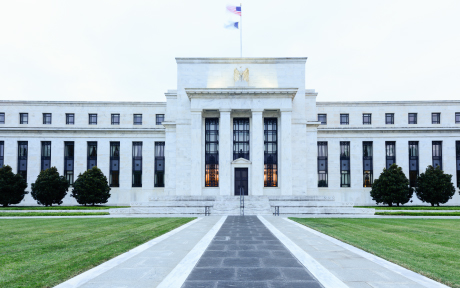A Time‑Series Perspective on Safety, Liquidity, and Low Interest Rates

Brandyn Bok, Marco Del Negro, Domenico Giannone, Marc Giannoni, and Andrea Tambalotti Second of three posts The previous post in this series discussed several possible explanations for the trend decline in U.S. real interest rates since the late 1990s. We noted that while interest rates have generally come down over the past two decades, this […]
A New Perspective on Low Interest Rates

Marco Del Negro, Domenico Giannone, Marc Giannoni, and Andrea Tambalotti First of three posts Interest rates in the United States have remained at historically low levels for many years. This series of posts explores the forces behind the persistence of low rates. We briefly discuss some of the explanations advanced in the academic literature, and […]
What Makes a Safe Asset Safe?

Over the last decade, the concept of “safe assets” has received increasing attention, from regulators and private market participants, as well as researchers. This attention has led to the uncovering of some important details and nuances of what makes an asset “safe” and why it matters. In this blog post, we provide a review of the different aspects of safe assets, discuss possible reasons why they may be beneficial for investors, and give concrete examples of what these assets are in practice.
U.S. Monetary Policy as a Changing Driver of Global Liquidity

International capital flows channel large volumes of funds across borders to both public and private sector borrowers. As they are critically important for economic growth and financial stability, understanding their main drivers is crucial for both policymakers and researchers. In this post, we explore the evolving impact of changes in U.S. monetary policy on global liquidity.
Dealer Balance Sheets and Corporate Bond Liquidity Provision
Which Dealers Borrowed from the Fed’s Lender‑of‑Last‑Resort Facilities?
Why Did the Recent Oil Price Declines Affect Bond Prices of Non‑Energy Companies?

Oil prices plunged 65 percent between July 2014 and December of the following year. During this period, the yield spread—the yield of a corporate bond minus the yield of a Treasury bond of the same maturity—of energy companies shot up, indicating increased credit risk. Surprisingly, the yield spread of non‑energy firms also rose even though many non‑energy firms might be expected to benefit from lower energy‑related costs. In this blog post, we examine this counterintuitive result. We find evidence of a liquidity spillover, whereby the bonds of more liquid non‑energy firms had to be sold to satisfy investors who withdrew from bond funds in response to falling energy prices.
Could Liquidity Regulation Revive the Bank Lending Channel?

Dong Beom Choi and Ulysses Velasquez How does monetary policy affect spending in the economy? The economic literature suggests two main channels of monetary transmission: the money or interest rate channel and the bank lending channel. The first view focuses on changes in real interest rates resulting from a shift in monetary policy and corresponding […]
Quantifying Potential Spillovers from Runs on High‑Yield Funds

On December 9, 2015, Third Avenue Focused Credit Fund (FCF) announced a “Plan of Liquidation,” effectively halting investor redemptions.













 RSS Feed
RSS Feed Follow Liberty Street Economics
Follow Liberty Street Economics